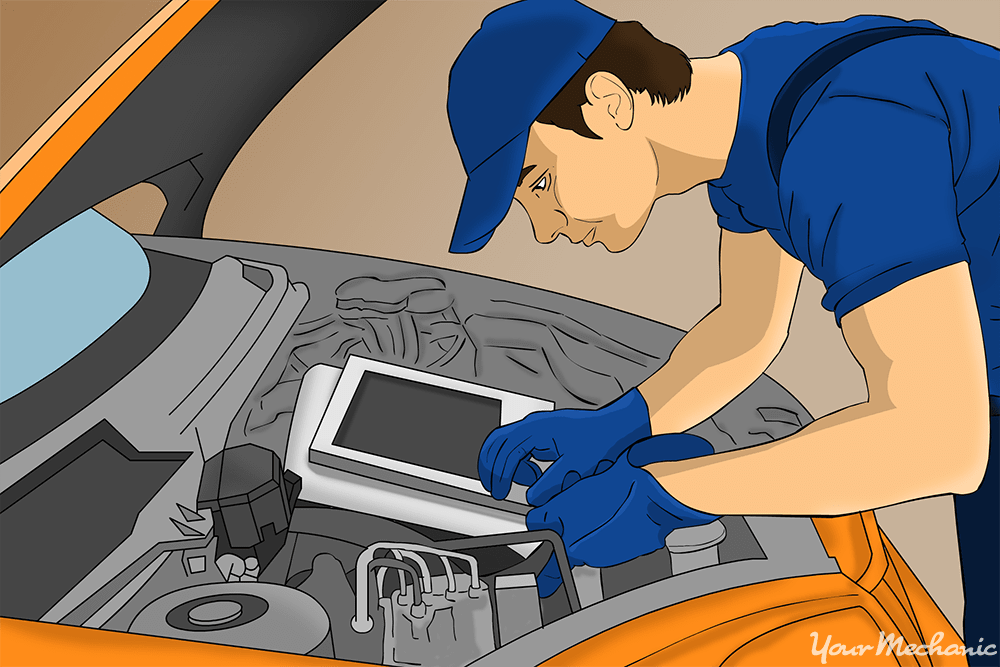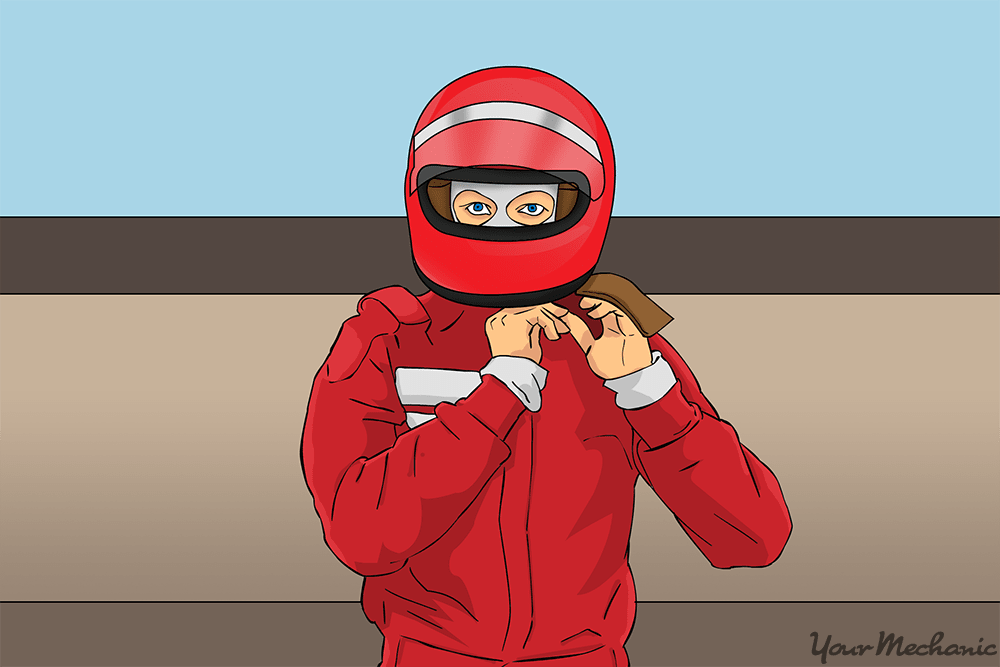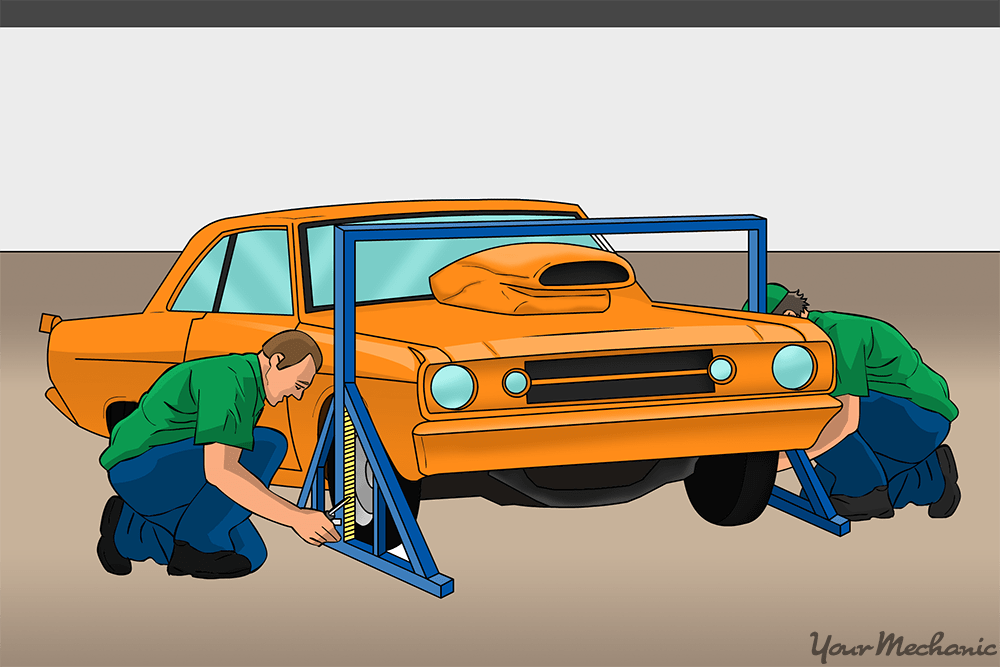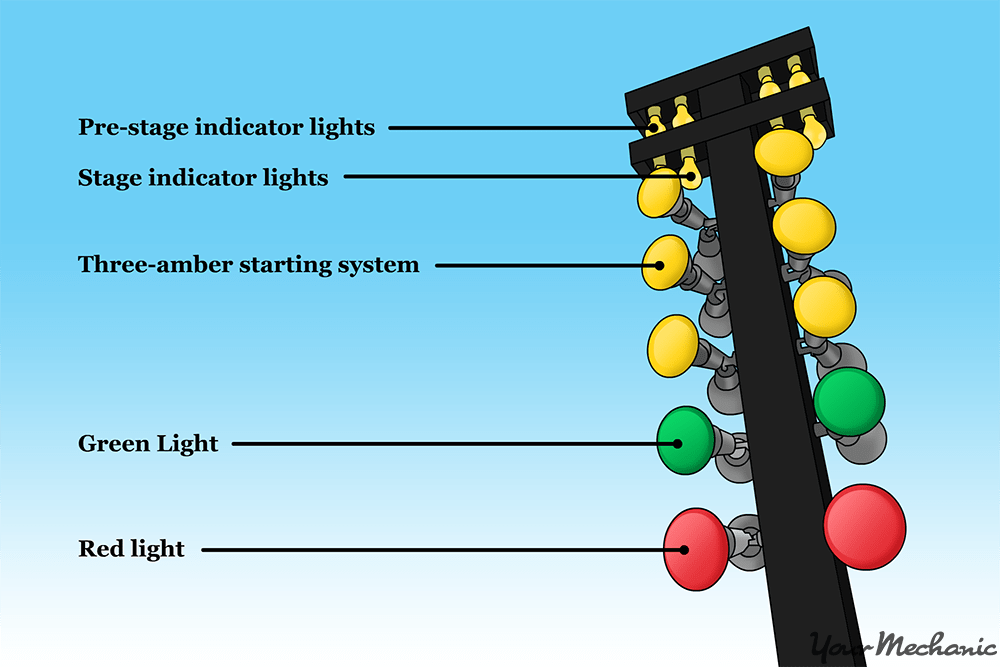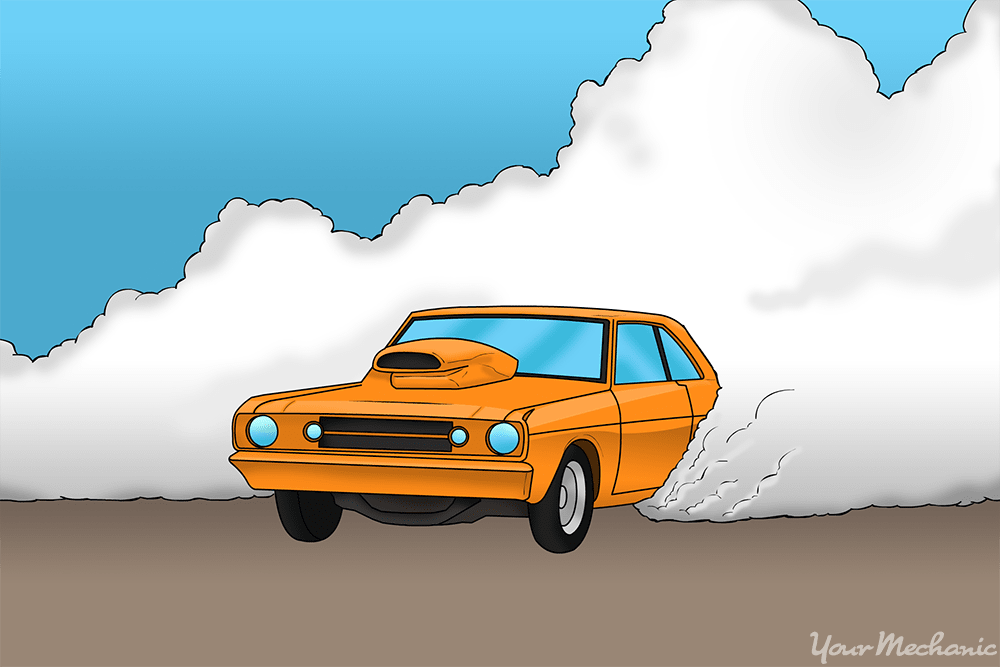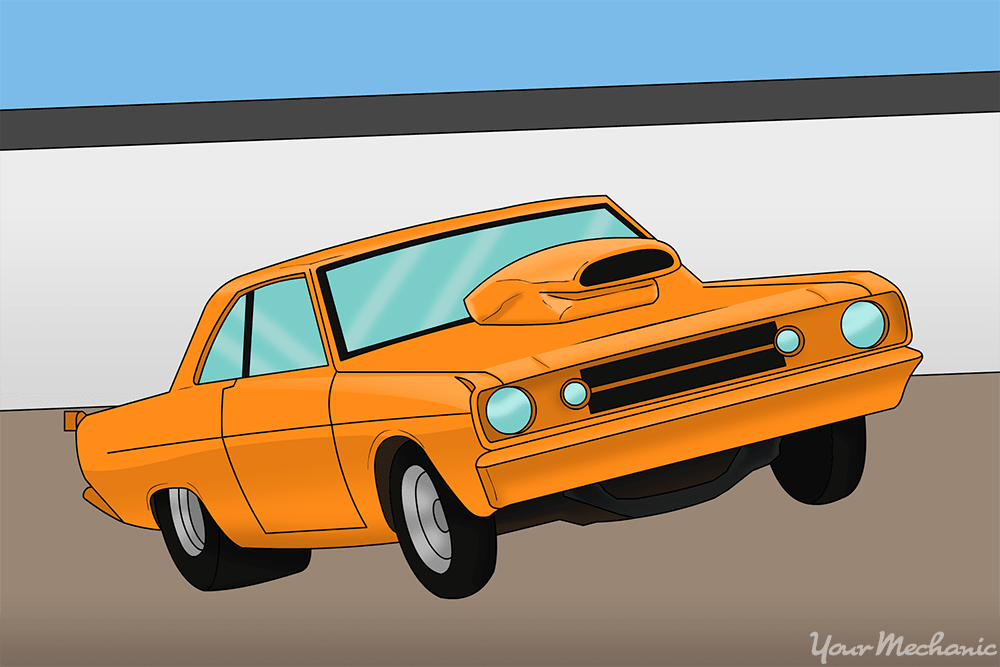

For auto enthusiasts, few things are as glorified as drag racing. From movies to video games to ESPN showcases, drag racing is seen as a symbol of fast cars and a love of driving. While it may seem like something that should be left to the professionals, drag racing is actually a very popular amateur sport, and one that is likely taking place at your local racetrack on a regular basis.
Participating in drag racing is a very serious commitment, but it is a lot of fun and is extremely rewarding. It will certainly require time, money, and work; but if you love cars and fast driving, there’s nothing better than seeing just how fast you can go in a powerful car on a quarter mile strip.
Part 1 of 5: Pick the perfect drag racer
Step 1: Find a car with a light frame. One of the keys to successful drag racing is to have a strong power to weight ratio.
The lighter the frame of your vehicle, the greater will be the impact of the engine.
- Tip: In addition, it is also important to find a car that is relatively easy to work on, as you will be spending a lot of time modifying your drag racer.
Step 2: Pick a stylish car. Drag racing involves much more than the few seconds when you are on the asphalt. There is an entire culture behind drag racing, and much of it involves a love of cars that is shared by everyone at the racetrack.
Before and after drag races, drivers and spectators alike admire each other’s cars. While you want to have excellent performance, you also want to have a car that is cool, fun, and looks fabulous. This will make the entire drag racing experience much more fun for you.
Step 3: Choose a car that you really love. If you are interested in drag racing, then you probably love cars and you may have some sentimental favorites: either cars you grew up with, or fell in love with as a kid.
This is the perfect time to fulfill your automotive fantasy, and get the car that has the most sentimental value to you. You will be spending a lot of time working on your drag racer, so you ought to make it a car that you love.
Part 2 of 5: Modify your drag racer
Step 1: Decide whether to rebuild or replace the engine. You have two choices when working on your drag racer’s engine.
You can rebuild the original engine to make it stronger, faster, and more drag ready, or you can start with a brand new one. There is no right choice, as it entirely depends on what you want to do, and what your budget allows.
Starting with a brand new engine eliminates some hassle, but usually costs a lot more money. If you’re looking for the easiest route, this is it - it requires relatively little work, and is extremely reliable and dependable.
However, if you love working on cars, or want to fine tune your engine to your exact wants and desires, rebuilding the engine is the way to go. When rebuilding an engine, you can focus on specific elements at a time, and slowly progress your drag racer to make it have both better acceleration, and better top end speed.
Either way, once you have purchased your drag racer, it is time to work on the most important part of any dragster – the engine. Whether you are rebuilding or starting fresh, try to get as much horsepower and torque as you can into the engine.
- Tip: Instead of starting out with the intention of making the best drag racer possible, set out with a modest engine - like a 500 horsepower one, which is more than enough to race in any competition. You can always change or upgrade parts when you have the time and resources.
Step 2: Modify the suspension. Even though the engine may be the most important part of a drag racer, its power becomes irrelevant if the suspension is not modified correctly.
After you modify the engine, you may need to spend some time working on the suspension to make sure that it can keep up with the power of your dragster.
Your suspension system is the link between your vehicle and the wheels, and helps your car handle and steer. If your suspension is not modified to fit your engine, you may have more power than your car can handle, and your drag racer will have a very difficult time driving in a straight line.
Some common ways to modify your suspension are to add or remove anti-roll bars, adjust shock absorbers, and alter spring ratings.
If you are very comfortable working on your car, you can make suspension modifications at home. If you’re not 100% comfortable, however, be sure to hire a professional.
- Warning: Always modify the suspension after you modify the engine: you will need to make sure that the stress specifications of the suspension match the power produced by the drag racer’s engine.
Make sure that any issues with the suspension or engine are fixed immediately, so that nothing malfunctions when you hit the race track.
Part 3 of 5: Take proper safety precautions
Step 1: Outfit your drag racer with the proper safety equipment. Drag racing is much safer than most people realize, but that does not mean that it is not dangerous.
Any time you push the limits of highly powerful engines, you run the risk of encountering malfunctions or accidents, and that makes it extremely important to provide excellent safety precautions in your car.
- Note: Be sure to add a roll cage, a five-point seat belt, a neck brace, and a fire extinguisher to the interior of your drag racer. These are all necessary safety features that you should never race without, and that you won’t be allowed to race without at an official meet. Should your drag racer be involved in an accident, the roll cage will help retain the structural integrity of your car to protect your body, and a five-point belt and neck brace keep your body secure even as your vehicle whips or tumbles.
These safety features can be purchased from any auto racing safety store, such as SafeRacer and Jegs. Seat belts, neck braces, and fire extinguishers can all be installed by following the manufacturer’s instructions. A roll cage requires technical proficiency and should be installed by a professional, unless you are very comfortable with automotive modifications.
- Tip: Not only are these features important for your safety, but it is likely that you will not be allowed to race if your car does not match the proper safety protocol.
Step 2: Get the proper safety gear for yourself. In addition to a safe car, you need to make sure that your body is protected by high quality safety gear.
A drag racing helmet is the most important part of your safety gear, but a fireproof suit, gloves, and shoes are also necessary.
Step 3: Make sure that your car is running properly. If your car has not been maintained correctly, it can be dangerous to reach high speeds like 120 mph.
Part 4 of 5: Register your drag racer
Step 1: Find a racetrack. Most racetracks have drag racing events; but if you have multiple tracks nearby, do some research to find which one is best for amateur drag racers.
- Tip: After you find a suitable racetrack, note down the next few race dates and details about any pre-registration process followed.
Step 2: Register your vehicle at the racetrack . When you get to the track on race day, you will need to register your vehicle for a certain class.
If you don’t know what class you should be in, a worker there will place you in a category based on the specifications of your drag racer.
Note: After being placed in a category, you may have to choose the style of race in which you want to participate.
Tip: Be sure to bring money when you head to the racetrack, as you will have to pay an entry fee in order to race.
Step 3: Have your drag racer inspected. Your car will have to be inspected by officials before you are allowed to drag race.
The officials will ensure that your car meets the necessary specifications, and that it is safe for you to operate it. When your car passes the inspection, you are ready to race.
Part 5 of 5: Race your car
Step 1: Observe the starting lights. There are some common timing settings for the starting lights at drag races. Once you are ready to race, you should watch a few races so that you learn the exact timing of the racetrack lights.
Step 2: Drive through the water box. The water box is an area of wet asphalt near the racetrack, that is used to warm up your tires.
Before racing, drive to the water box to clean your tires of any sediment and add extra grip to them.
- Tip: If you feel comfortable, perform a burnout in the water box, as that will greatly help your tires.
Step 3: Get ready to race. You will likely have many qualifying bouts at your racetrack, so there will be ample opportunity for you to race.
Once you are ready to race, pay close attention to what is happening and what you are supposed to do, so that you don’t miss any of your races.
Tip: Always follow the instructions of the people working at the racetrack, and if you are not sure what you should be doing, just ask someone for help.
Warning: For the safety of both you and your competitors, you should always stay in your lane. To accomplish this, ensure that you do not look over at the opposing driver at any time during the race.
Step 4: Collect your timing slip. After the race is over, pick up your timing slip from the timing booth. This slip will have your time, your top speed, and your reaction time.
- Tip: Always keep your timing slips so that you can see how you and your car are improving over time.
Drag racing is one of the most fun and adrenaline-filled sports available today, and it may be perfect for you. It takes a lot of dedication; but if you are really serious about it, you will have a truly wonderful time.
To make sure that your car can drag race safely, get regular safety inspections and brake inspections from certified mobile mechanics, such as the ones at YourMechanic.


